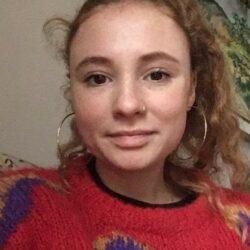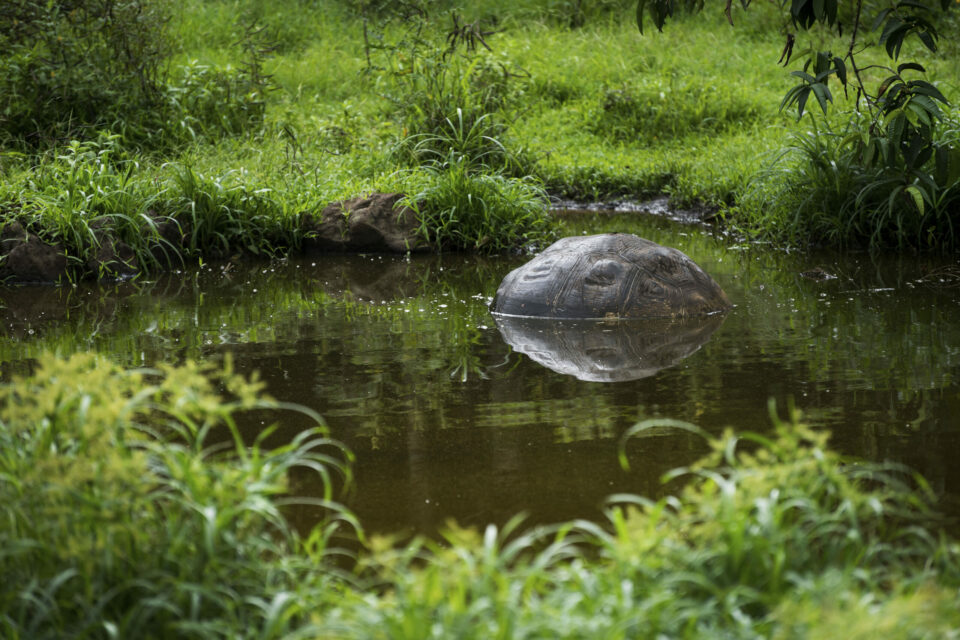

An interview with marine biologist Alice Skehel
We asked marine biologist Alice Skehel about the threats that she’s witnessed to waved albatrosses during her research expeditions to Española island.
In our latest storybook, we introduce you to Alberto the waved albatross and his family on Española island. Waved albatrosses can live up to 30 years and mate for life, producing only one chick a year, which makes the species vulnerable to severe population declines if an adult dies early. Once a chick has hatched, it will be left in ‘nursery’ groups, allowing the parents to go off and feed. Around five and half months after hatching, chicks will fledge and spend the next six years out at sea before returning to Española to find a partner!
We asked marine biologist Alice Skehel about the threats that she’s witnessed to waved albatrosses during her research expeditions to Española island and the importance of protecting the island for the Critically Endangered species.
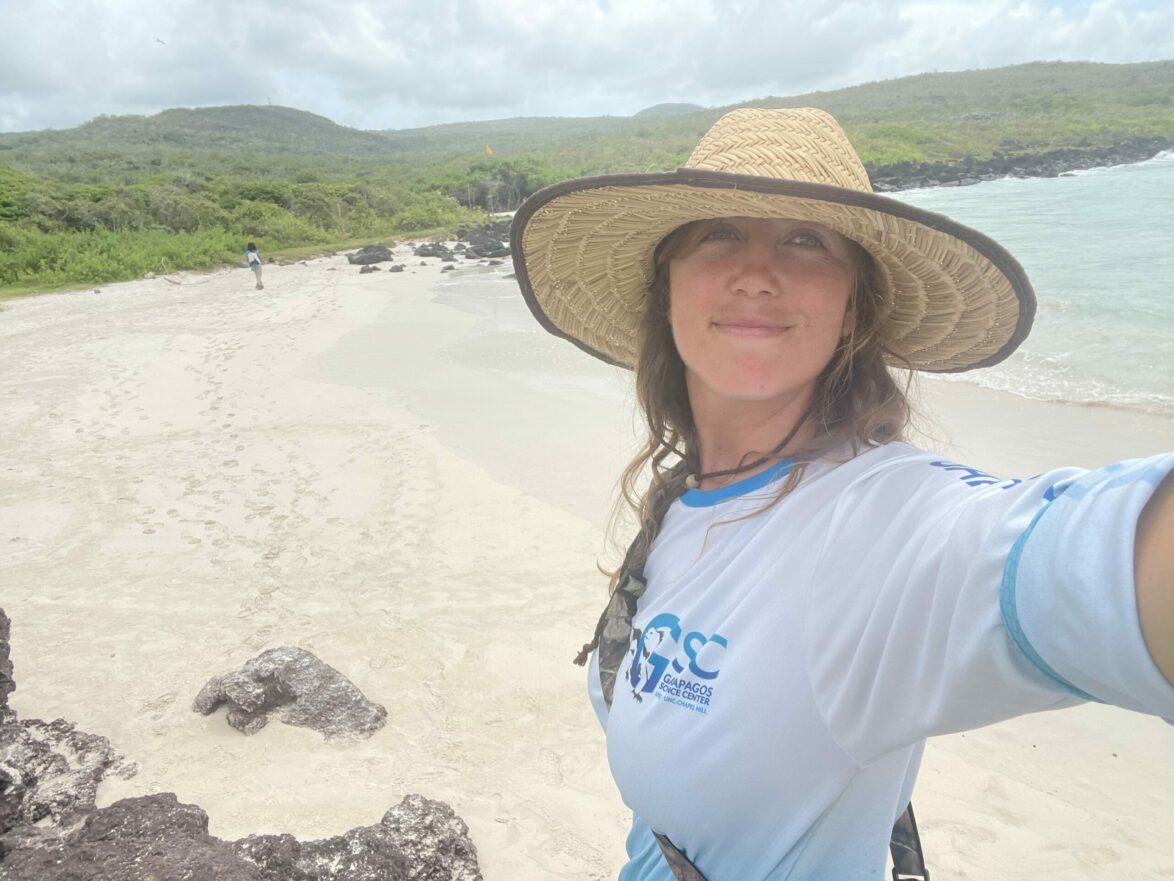
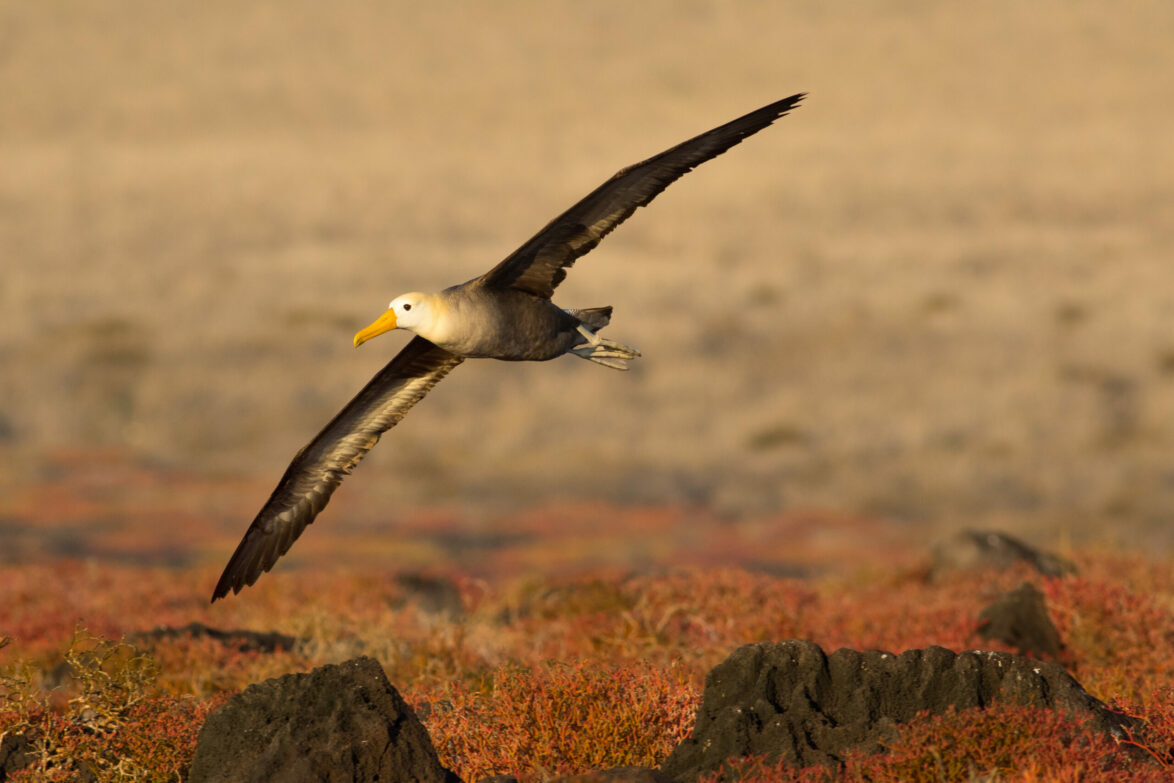
Waved albatross
Phoebastria irrorata
The waved albatross has the largest wingspan in Galapagos, but these monogamous birds are under threat.
What is your most memorable experience with a waved albatross?
I spent time with a waved albatross colony in Punta Cevallos on Española island. A team of scientists and I were lucky enough to camp there to survey the coastline for plastic pollution. Albatross are seen as majestic, elegant birds, yet watching them on land shows you their quirky, silly side as they awkwardly trip over rocks and socialise in little groups, bickering and chatting with their neighbours. Sadly, despite being on a remote, uninhabited island, we found plastic pollution throughout the colony, thrown onto the rocks by strong winds during storms.
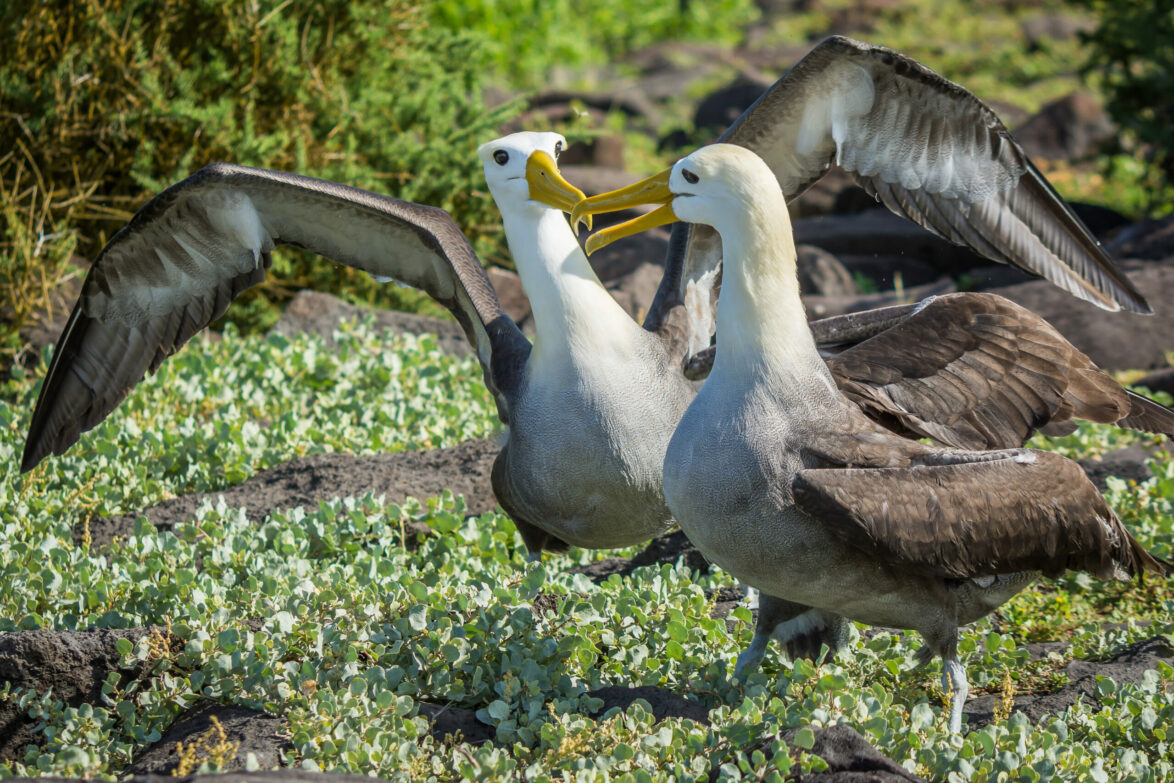
Why is it important to protect the waved albatross and its breeding grounds on Española island?
Española is the most important site for waved albatrosses in the world, as they almost exclusively use this island to breed. When they are ready to breed, waved albatrosses return almost to exactly the same spot on the island to find a life-long partner. A pair will only breed once a year; if their nest fails, they won’t attempt again until the following year. Española island is the perfect habitat for these birds, with steep cliffs, high winds and very low vegetation, creating the perfect landing platform in the breeding season. Additionally, the surrounding seas are highly productive and full of tasty squid. With no ground predators on Española, couples can breed and raise their chick safely.

Through your research, what impacts have you seen of plastic pollution and commercial fishing, particularly long-lining, on species such as the waved albatross?
It is difficult to understand the full impact of plastic pollution and commercial fishing on seabirds. Scientists can often only study seabirds during the 20% of the year when they come to land to breed. Most of their exposure to commercial fishing vessels, and pollution occurs during the 80% of the year they are out at sea fishing. We believe they follow fishing vessels, diving to catch prey stuck on hooks. This can often result in birds getting accidentally caught on the hooks or fishing lines. Additionally, birds may be ingesting pollution either indirectly, through their prey, or directly by mistaking it for food. A recent study demonstrated that ingesting macroplastics (plastics that are larger than 0.5 centimetres) causes scarring and inflammation inside the digestive tract.

What can we do in our daily lives to help fight plastic pollution?
- Put pressure on large cooperations by calling out the amount of single-use plastics they produce
- Avoid buying plastic water bottles and instead invest in a reusable bottle
- Live by REDUCE, REUSE, RECYCLE (in that order), reduce your personal waste, reuse items for as long as possible, and recycle an item if you can
- Be an advocate for the planet and inspire others to live sustainably, not by shaming people for using plastics, but by having fun and being creative with Reduce, Reuse, Recycle!
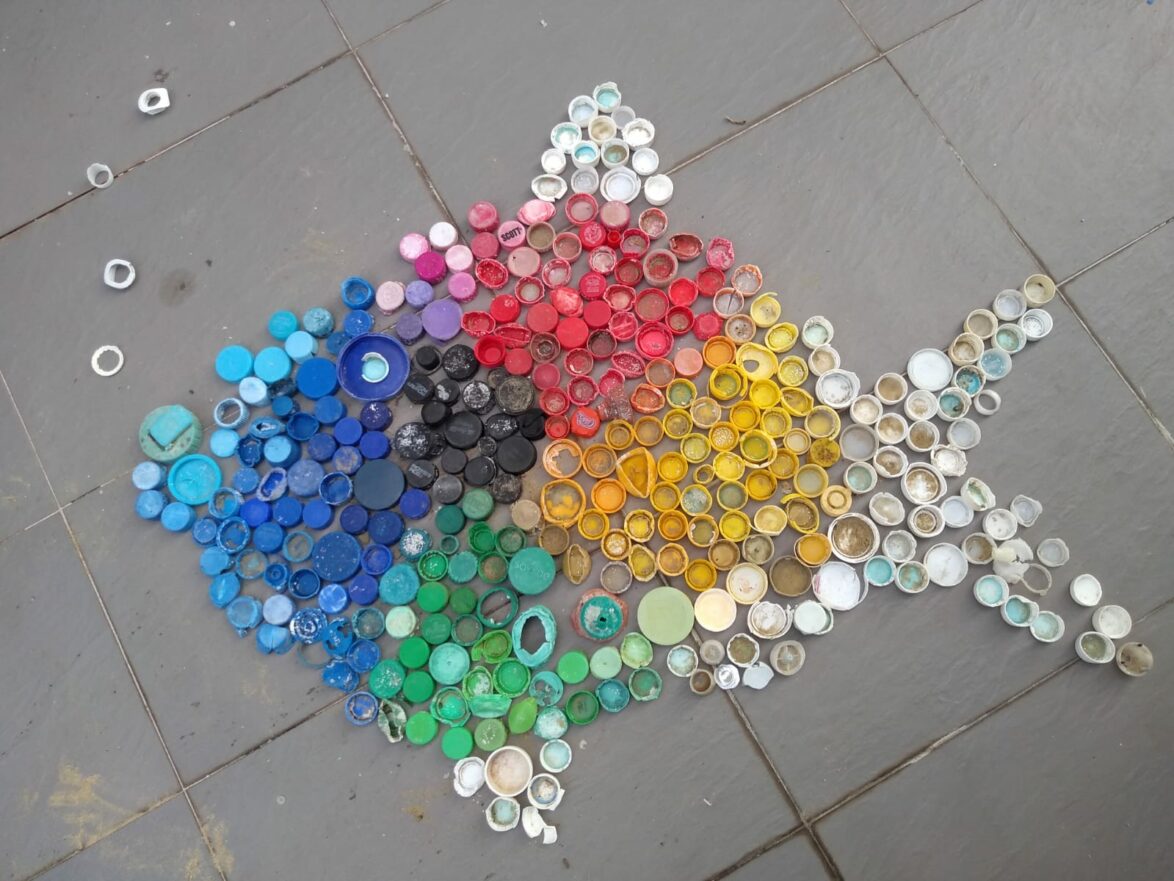
How important is it to engage children at a young age in learning about the environment through educational initiatives such as storytelling?
Storytelling is an essential part of human history and an excellent way to help contextualise a topic that someone can’t experience themselves. Many Galapaguenian locals cannot experience Galapagos in the same way tourists can, and many of the children and adults on the island have never seen an albatross. The Alberto the Waved Albatross storybook highlights why commercial fisheries and plastic pollution are a problem and creates an emotional incentive to address these issues and protect a Critically Endangered species and its home.


Pollution in Galapagos
The impact of a growing human footprint on waste and water management systems is increasing on the Islands, while the burden of incoming plastic pollution on ocean currents also grows.
How you can help
Help us raise £4,000 to bring Alberto the waved albatross and his family to life so that they can inspire people of all ages to protect the precious wildlife of the Galapagos Islands by supporting our crowdfunder.
Related articles

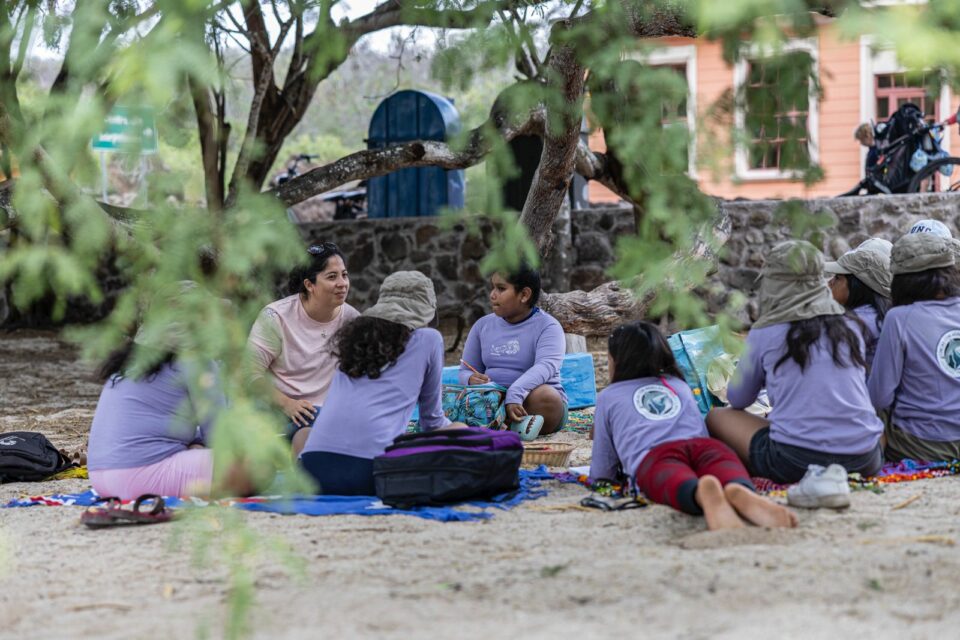
Gills Club: Empowering young women in Galapagos
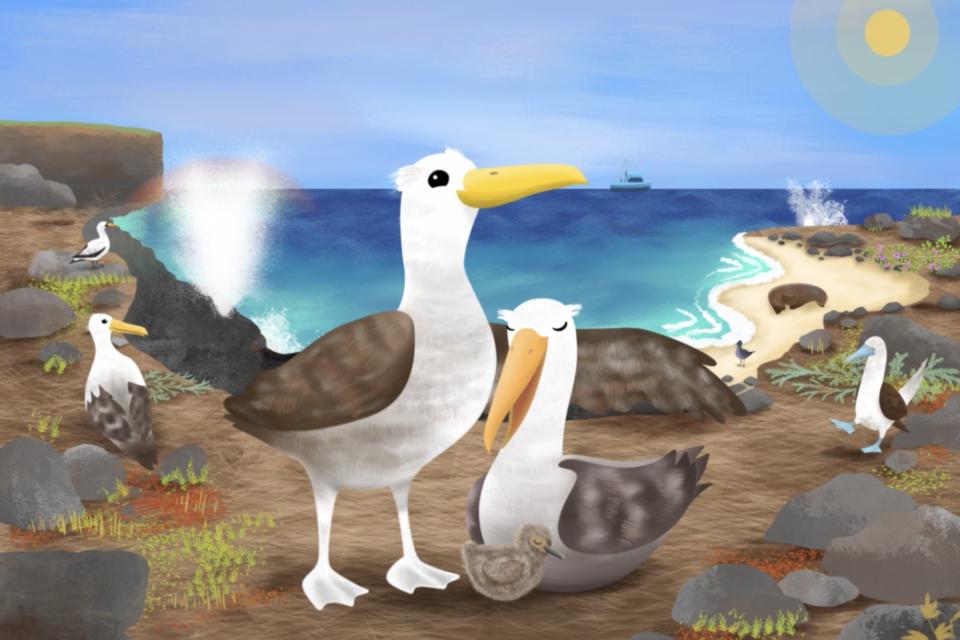
Meet the woman who brought Alberto the Waved Albatross to life

